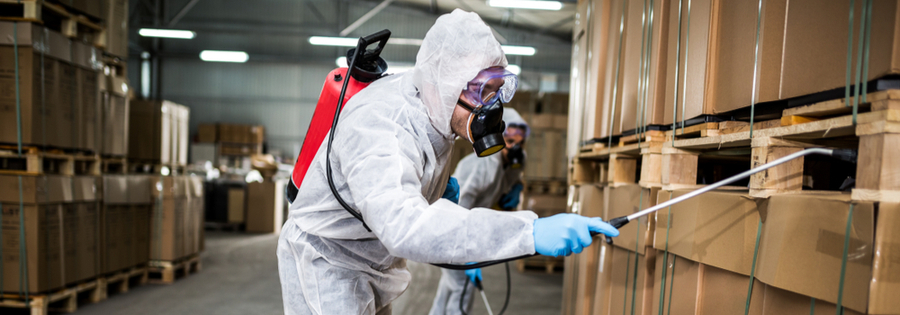Expert Bug Control Techniques for Long-Term Results
In the world of parasite control, attaining continual efficiency and long-lasting results requires a precise method that transcends mere elimination. Professional bug control techniques encapsulate a detailed approach that starts with an extensive inspection and assessment, complied with by exact bug identification to understand their behavior patterns. The implementation of Integrated Insect Monitoring (IPM) concepts, paired with eco-conscious therapies, forms the keystone of sustainable insect eradication. The real test exists in the ongoing tracking and maintenance of the treated areas, guaranteeing a pest-free environment for the near future. By diving right into the details of these strategies, a much deeper understanding of specialist bug control methods for enduring outcomes arises.
Assessment and Analysis
Upon getting in a property for parasite control services, the initial action is a thorough examination and evaluation to identify the degree of the problem and determine one of the most efficient therapy strategy. Professional parasite control service technicians are trained to thoroughly analyze the premises, seeking indications of insect task such as droppings, chomp marks, nests, or any architectural damage. They will certainly additionally examine the conditions that may be attracting parasites, such as food sources, water leaks, or entrance factors.

Pest Recognition and Habits

Additionally, understanding the behavior of the recognized pest is vital to carrying out efficient control steps. Knowing where parasites nest, what they feed on, and their task patterns can assist pest control specialists devise methods to remove them efficiently. Some parasites might be nighttime, while others are extra energetic throughout the day. This expertise enables the application of treatments at optimal times for maximum efficiency.
Integrated Parasite Monitoring (IPM)
Integrated Parasite Management (IPM) techniques incorporate numerous strategies to regulate and stop insect infestations in a lasting and eco-friendly manner. Exterminator DC. By integrating methods such as biological control, habitat manipulation, alteration of social techniques, and making use of resistant selections, IPM intends to decrease making use of chemical pesticides
Among the crucial principles of IPM is the emphasis on avoidance. This proactive method involves tracking insect populations regularly to find any type of possible concerns before they escalate. By recognizing bug problems beforehand, pest control actions can be carried out quickly and effectively.
Moreover, IPM advertises the use of safe parasite control approaches whenever feasible. This can consist of using all-natural killers of the parasites, introducing advantageous insects, or using pheromones to interfere with mating patterns. By reducing reliance on chemical pesticides, IPM not just shields the environment but additionally aids maintain a balance in the ecological community.
Environmentally-Friendly Therapies
Applying eco-conscious methods in insect control treatments can successfully address invasions while focusing on ecological sustainability. Environmentally-friendly treatments focus on reducing the influence of bug control approaches on communities, non-target organisms, and human health. These methods commonly include using natural killers, such as ladybugs or nematodes, to manage pest populaces, reducing the demand for chemical treatments. In addition, strategies like environment manipulation, such as readjusting dampness degrees or eliminating food resources, can help deter parasites without the use of damaging compounds.
One more secret facet of environmentally-friendly treatments is using organic and biodegradable items that break down quickly without leaving dangerous deposits in the atmosphere. Organic pesticides originated from plants like chrysanthemums or neem offer effective parasite control while posturing marginal threat to non-target types. Moreover, employing approaches like warmth treatments or scent catches can target particular insects with precision, decreasing the total environmental impact of insect control practices.
Continuous Monitoring and Maintenance
Constant security and upkeep are necessary elements of effective pest control pest control monitoring. Recurring tracking plays an essential duty in guaranteeing that insect infestations are detected very early and handled quickly. Normal assessments by skilled professionals are essential to determine any indicators of parasite activity, assess the efficiency of previous treatments, and make changes to the bug control strategy as required. By monitoring insect populations in time, pest control specialists can track trends, expect prospective issues, and carry out safety nets to lessen the danger of future invasions.
Along with surveillance, upkeep practices are important for lasting insect control success. This includes implementing correct cleanliness procedures to eliminate possible food and water sources for parasites, sealing access indicate protect against bugs from going into the properties, and dealing with any architectural concerns that might facilitate pest infestations (bed bug heat treatment). By incorporating recurring monitoring and upkeep right into an incorporated parasite management strategy, companies can ensure a pest-free atmosphere and safeguard their home versus costly damages and health and wellness threats
Final Thought
In conclusion, using expert insect control strategies such as extensive inspection and analysis, exact insect identification and understanding of their behavior, integrated pest administration approaches, environmentally-friendly therapies, and ongoing tracking and upkeep are necessary for achieving long-lasting outcomes in insect control. By executing these approaches, people can successfully handle parasite problems and preserve a pest-free atmosphere in a lasting manner.